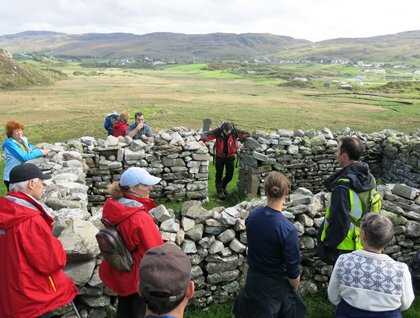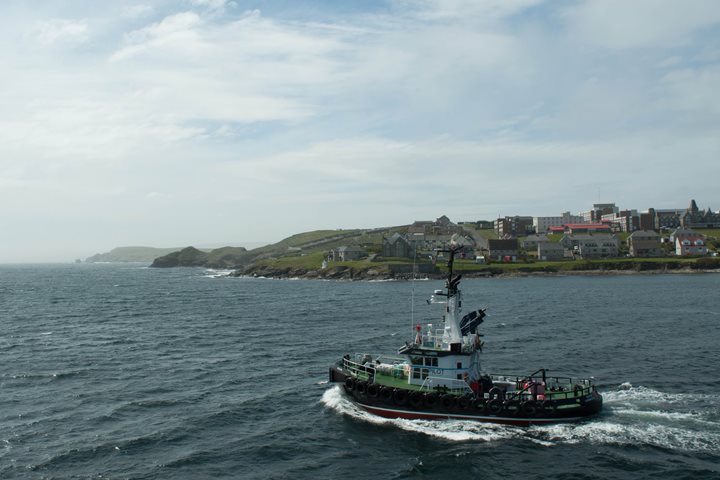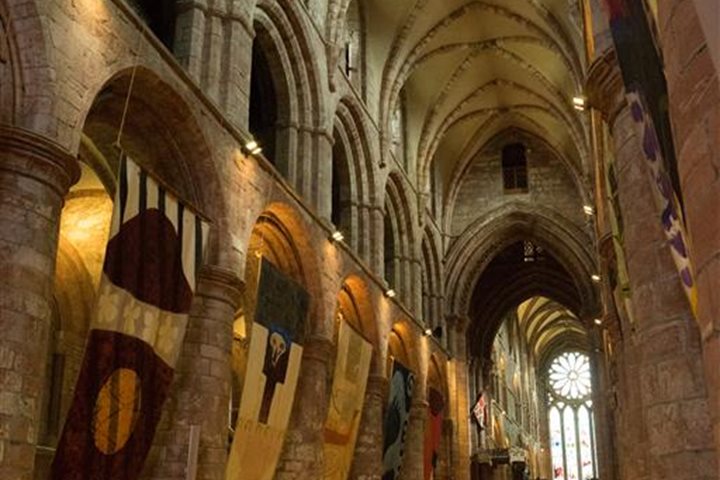Early birds with coffee or tea in hand gather on the bridge as we traverse the sea cliffs of northwest Ireland. The morning approach to Inishmurray is highlighted by the green cliff tops and rugged rocks where nesting seabirds abound. Gannets, fulmars, razorbills, and kittiwakes punctuate the sea below and sky above.
We approach Inishmurray from the landward side and take a slow pass as the waves break along its low flat shores. This small island sits in Donegal Bay on the west coast of County Sligo, just a few miles from the mainland. Our expedition historian David shared some of the long history dating back to the 6th century B.C. as we passed its grassy fields and stone remains of its human historical past. This past included the Cashel, an early Christian monastic settlement, including corbelled beehive huts. In recent centuries crofters lived on the island, farming and fishing. Human occupation finally came to an end in 1948 when the last of the islanders left for the mainland. Remains of their homes and the school at the end of the island are all that remained.
Gray skies above with small patches of blue hinted at the day to come. The ship pulled into the Killybegs and tied up dockside, affording a gentle debarkation after lunch. Guests divided into three groups and explored the beautiful Irish countryside. The first group visited the world famous woolen mill in Kilcar, where carpets, known as Donegals, are hand-knotted in the Turkish style. Another group set out on a three-mile hike into the Glencolmcille to see the Colmcille wishing well, a pilgrimage site, with scenic views of the surrounding mountains, farmlands, and dramatic cliffs. The final stop on the hike was a Napoleonic-era watchtower overlooking the seaside cliffs. Hikers were rewarded with a warm hearth and pint of Guinness at a traditional Irish pub. Finally, the third group took a journey into the archeological history of the region with prehistoric megalithic tombs dating back to approximately 3,000 B.C. Guests explored the Cloghanmore court tomb and its large open court and numerous portal tombs with expert Irish historian Vinnie.
Each group departed the terminal and passed through the rolling hillside farmlands of Donegal. The drive to all the sites meandered on the roads winding through typical idyllic small farms where sheep graze and potatoes are cultivated. The surrounding hillsides show the active tradition of peat cutting, which is still used by many farmsteads for heating and cooking.
Upon return to the ship, we had an early dinner so that we could disembark again for a local hotel in Killybeg where our expedition ethnomusicologist Jacob arranged some music for the evening. Everyone, including the locals, was blown away by the excellent Irish bluegrass band We Banjo Three.







